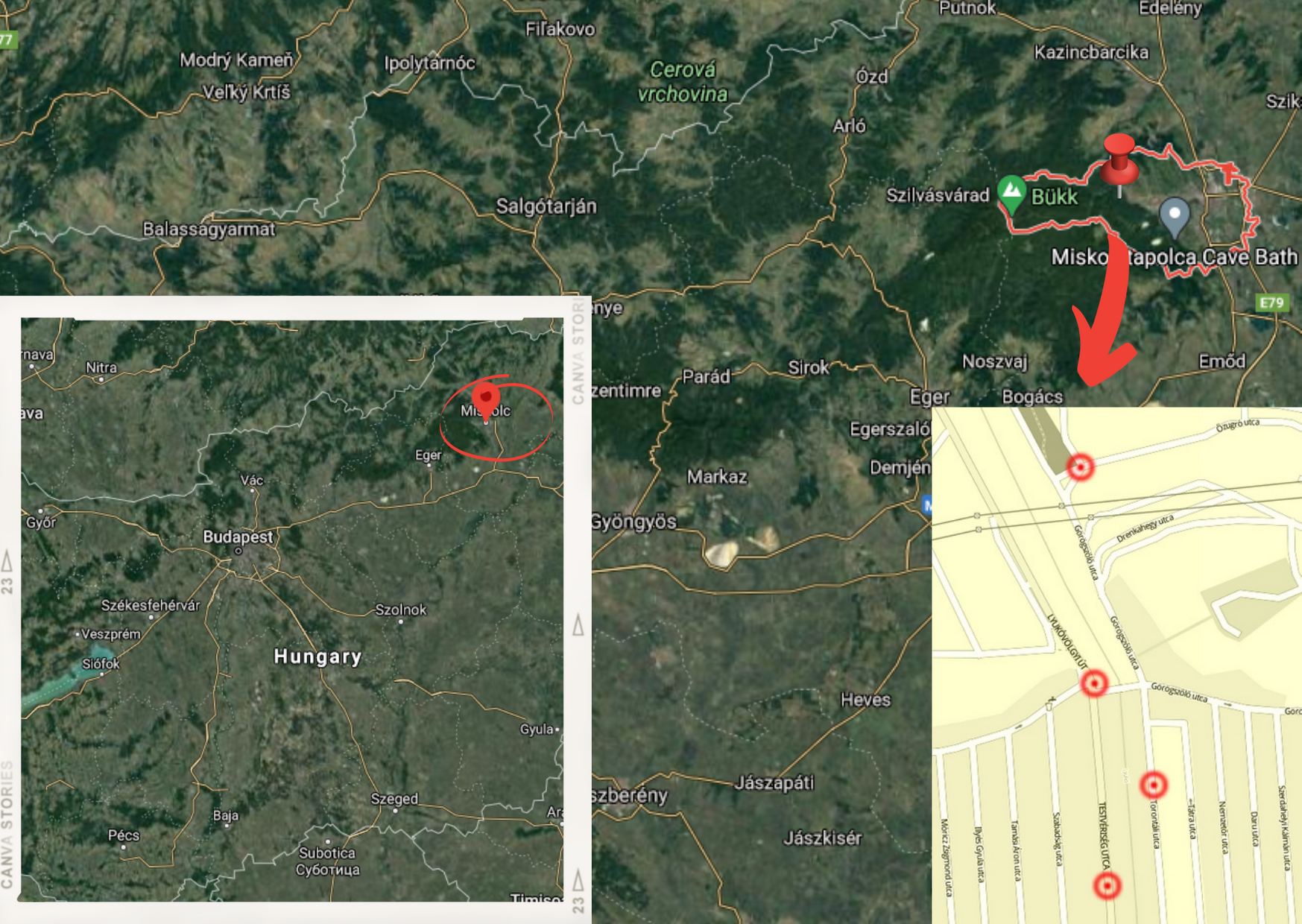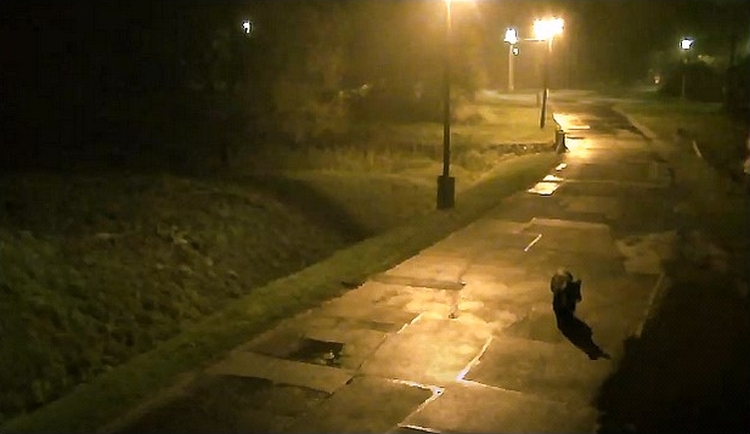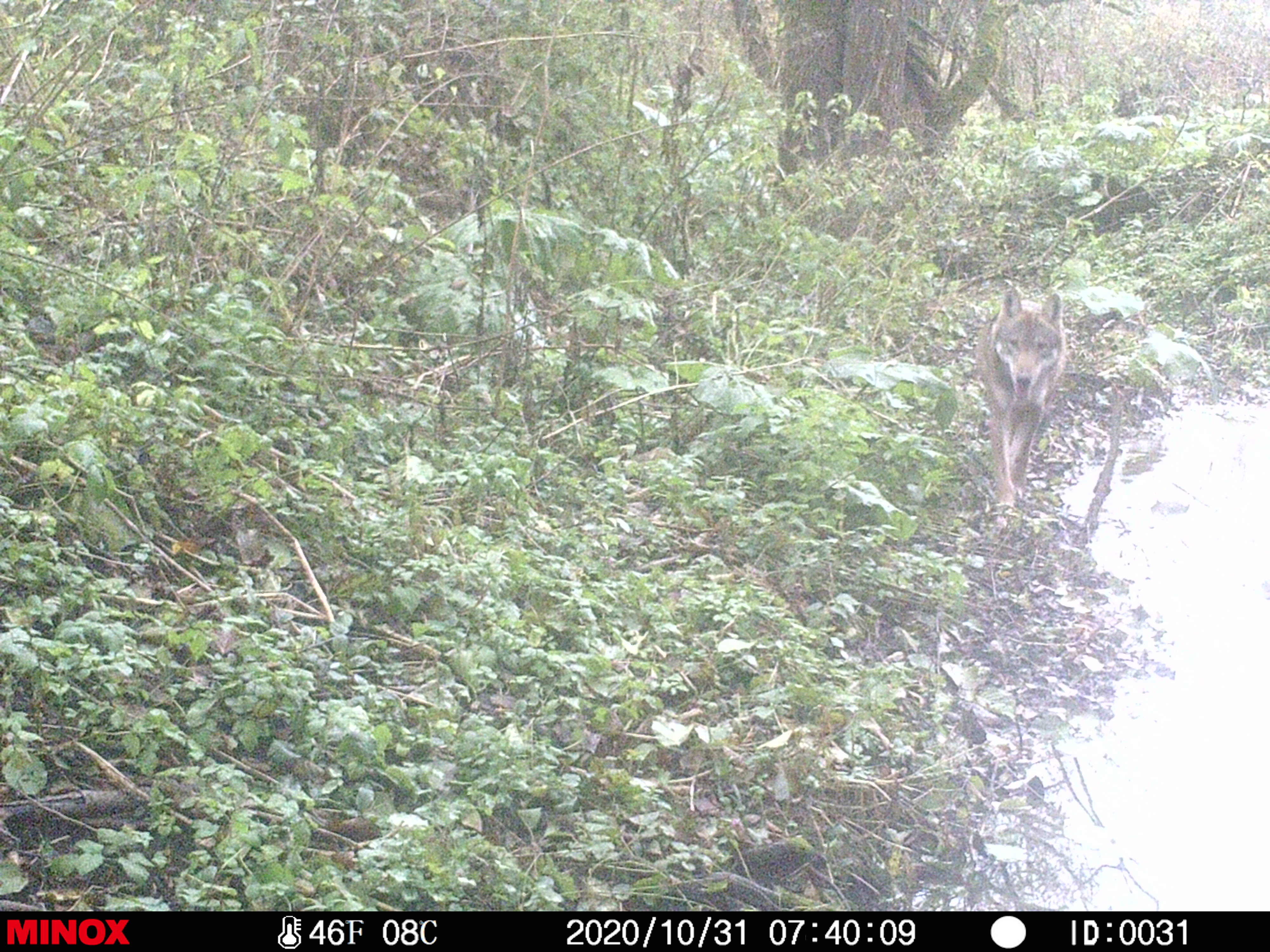SaveGREEN - The call of the wild
17-12-2020
What could be a better evidence of a nature conservation project's success, than having their non-human target groups (in our case the large carnivores like the Brown bear, and the Grey wolf) resettled to a protected area? Well, SaveGREEN's ancestor projects, TRANSGREEN and ConnectGREEN truly achieved remarkable results, that SaveGREEN now have an opportunity to even elevate more.
A curious Brown bear became an internet sensation after he took a night walk in the city of Miskolc, around 170 kilometers far from the Hungarian pilot area of SaveGREEN (which would be basically a one and a half day journey if the eco-corridors are connected). For the inhabitants of Miskolc, the fourth largest city in Hungary, the appearance of a wandering brown bear on the 17th of October was rather unrealistic before. Caught on camera in the outer city perimeter, fortunately, no citizen came to be under threat, while members of the local municipal police patrolled day and night to inform the public on how to react should they come across traces of the bear. Or, well, the animal itself.

Credit: Miskolc city map and the areas where the bear was spotted Source: Agrárágazat | Map of Miskolc | Google maps
Courtesy of hvg.hu, you can have a longer glimpse of the bear wanderer in the following video.
While the idea of encountering a large furry carnivore can be distressing, there is no need to fear these creatures as long as we behave responsibly and leave them undisturbed.
That said, now, bear facts to bear in mind.
Number one: do not chase a brown bear, whether on foot or by car, in an attempt to take a photo — even less, a selfie. If Sir David Attenborough wouldn’t do it, why would you? Doing so can frighten the bear, potentially hampering it from successfully returning to its actual habitat and pushing it to defend itself or its cubs, thus placing the photographer and other nearby people in potential danger.
While bears are actually shy and present little danger to humans, we need to remember that these are wild animals that must be treated responsibly towards peaceful co-existence.
Number two: contrary to what many may think, brown bears feed mainly on fruits and berries. Indeed, some 60-80 % of the typical diet of an average brown bear is of plant origin.

In the past 5 years, Brown bears have started to wander back into the northern area of Hungary. |
Credit: © Miskolc Municipal Police | Source: Agrárágazat
Number three: During the 19th and 20th centuries, the bear population in Hungary shrunk dramatically due to excessive hunting. Today, however, the species is strictly protected throughout the country, and numerous sightings have been reported since the 1980s. Most often, these occur in late spring and early summer, as May and June coincide with the bears’ mating season during which they often choose to travel great distances in search of a mate.
Number four: due to their size and migratory needs, bears, like other large carnivores, are particularly vulnerable to the destruction and fragmentation of their remaining habitats. To address such a problem, the ConnectGREEN project, for instance, is working on identifying the ecological corridors whose maintenance and restoration is crucial to securing functioning ecosystems and viable large carnivore populations in the Carpathian region.
The wolves turn
Bears are not the only large carnivore showing themselves as of late in Hungary. In the Bükk National Park, ConnectGreen fieldwork experts of the Bükk Vertebrate Research Association (BEKE - Bükki Emlőstani Egyesület) spotted last on the 17th November, a wolf during the daytime, giving a good sense of a rebuilt population of an endangered species.

Wildlife camera of Bükk National Park captured a pack of Wolves in Zemplén area | Credit: Bükk National Park | Source: Google
In the meantime, still in an area of the Northern Mountains of Hungary namely in Zemplén area, a living example of an ongoing nature-based solution project is happening in Füzér, a Hungarian city that aims to become a wolf and lynx friendly settlement. The common key to success? Engaged and well-prepared inhabitants, sectoral stakeholders, and city governance, none of which Füzér is lacking. And in such line, the municipality of Füzér is planning to declare the almost 3,500-hectare border of the settlement to be a special-purpose nature reserve area to protect the habitat of wolves and lynxes.
These news are not just living proof of a great success, but sets a great example as well, that will surely fuel SaveGREEN's ambitions to keep up the good work and transnational coopreation.
Sources:
